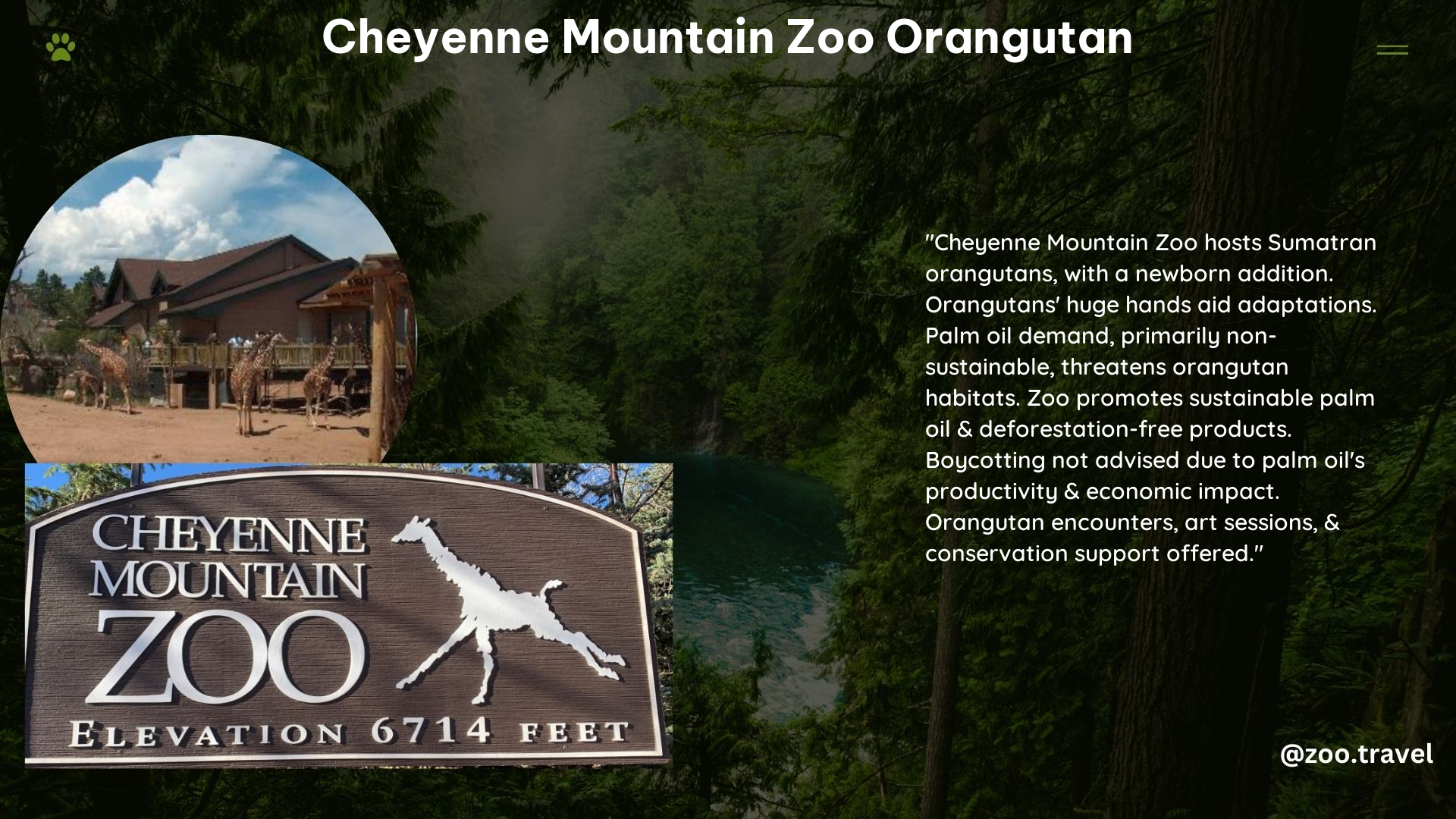The Cheyenne Mountain Zoo in Colorado Springs, Colorado, is home to a remarkable group of orangutans that have recently undergone renovations to their outdoor habitats. These intelligent and agile primates captivate visitors with their “handy” adaptations, showcased during the zoo’s engaging animal demonstrations.
Cheyenne Mountain Zoo Orangutan Encounters
One of the highlights of visiting the Cheyenne Mountain Zoo is the opportunity to participate in a unique Orangutan Encounter. This 30-minute experience allows up to four people to get up close and personal with these remarkable creatures. The encounter includes admission to the zoo for the day and a donation to the Quarters for Conservation program, which supports the zoo’s conservation efforts.
During the Orangutan Encounter, visitors can observe the orangutans’ natural behaviors, learn about their adaptations, and even have the chance to interact with them through the safety of the enclosure’s barriers. This immersive experience offers a rare and unforgettable glimpse into the lives of these fascinating primates.
Engaging Animal Demonstrations

In addition to the Orangutan Encounter, the Cheyenne Mountain Zoo offers a variety of animal demonstrations throughout the day. These demonstrations provide visitors with fun and educational experiences while also enriching and engaging the animals.
Some of the demonstrations include:
- Penguin Keeper Talks
- Guinea Pig Parades
- Lion Enrichment
- Wolf Feeding
- Caring for Elephants
- Barn Owl Training
- Alligator Feeding
- Treetop Acrobats
- Caring for Awesome Apes
- Grizzly Demos
These demonstrations not only entertain and educate visitors but also showcase the zoo’s commitment to animal welfare and conservation.
Orangutan Conservation Efforts
The Cheyenne Mountain Zoo is deeply committed to the conservation of orangutans and their habitats. One of the zoo’s primary focuses is on the issue of palm oil production, which can lead to the destruction of rainforests where Sumatran, Bornean, and Tapanuli orangutans live.
The zoo is working to ensure that the palm oil consumed in its operations is sustainable and deforestation-free. Additionally, the zoo encourages visitors to support companies that are committed to using sustainable palm oil in their products.
Through these conservation efforts, the Cheyenne Mountain Zoo is playing a vital role in protecting the future of orangutans and their fragile ecosystems.
Unique Features of Cheyenne Mountain Zoo Orangutans
The Cheyenne Mountain Zoo’s orangutans possess several unique features that set them apart from their counterparts in other zoos:
- Outdoor Habitat Renovations: The zoo has recently renovated the outdoor yards of the orangutans, providing them with more space and enrichment opportunities.
- Handy Adaptations: During the animal demonstrations, visitors can witness the orangutans’ impressive “handy” adaptations, which allow them to move and manipulate their environment with remarkable dexterity.
- Interactive Experiences: The Orangutan Encounter offers a rare opportunity for visitors to interact with the orangutans in a safe and controlled environment, fostering a deeper appreciation for these remarkable primates.
- Conservation Initiatives: The zoo’s commitment to sustainable palm oil and rainforest conservation sets it apart as a leader in orangutan conservation efforts.
Conclusion
The Cheyenne Mountain Zoo’s orangutans are a true highlight for visitors, offering a unique and immersive experience that combines education, conservation, and the opportunity to witness the remarkable adaptations of these intelligent primates. Whether you participate in the Orangutan Encounter or simply observe the animals during the zoo’s engaging demonstrations, a visit to the Cheyenne Mountain Zoo is sure to leave a lasting impression and deepen your appreciation for the wonders of the natural world.
